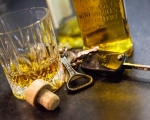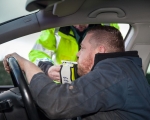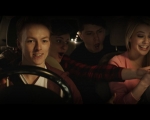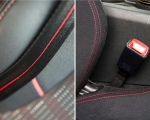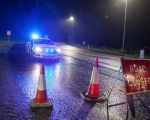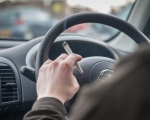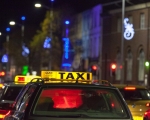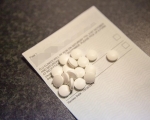Welcome to part three of what looks like five articles in total, titled ‘road safety as witnessed by a back-seat driver’ – in this installment I aim to cover motoring issues such as drink and drug driving along with passenger safety.
We will start off with drink driving; something that is close to my heart as I never got to meet an Aunt due to an irresponsible driver who thought it acceptable to drive whilst intoxicated.
You should never ever drink and drive!
Just one drink could increase your risk of crashing. The consequences of drinking and driving are devastating. Drivers who consume alcohol before getting behind the wheel may kill or injure not only themselves but also their passengers and other road users.
Alcohol slows your reactions and even very low amounts of alcohol will impair the skills needed for safe driving. It slows down the brain, impacting upon your judgement, reason, self control and reaction times.
This driver was right not to take any risks and blew an impressive ZERO
You may feel a false sense of confidence, lose inhibitions and are more likely to take risks. Evidence shows that drivers who have been drinking tend to focus more on the most basic activities, such as steering, and less on other key driving skills. This increases your risk of crashing.
We are all affected by alcohol in differing ways such as the amount and type of alcohol consumed, the age of the consumer, the size, weight and gender of the consumer will also come into play as to how the alcohol is absorbed into the body.
Certain groups will suffer with affects more easily than others but it is not worth taking the risk as there are strict alcohol limits for drivers. It is impossible to say exactly how many drinks this equals as it is different for each person.
The legal alcohol limit for drivers in Northern Ireland is as follows: 35 microgrammes of alcohol per 100 millilitres of breath | 80 milligrammes of alcohol in 100 millilitres of blood | 107 milligrammes of alcohol per 100 millilitres of urine.
Don’t risk even one drink
So is it really worth the risk of even one pint, one glass of wine or a sneaky G&T? Well no! Just one drink could be enough to fail a roadside breath test leading to prosecution.
If you are going out and you plan to take a drink or think you might be tempted to take a drink then the protocol is simple – book a taxi, arrange a lift, designate a driver or if you are in built up areas, check out the public transport options.
The morning after is when most of us play a game of Russian Roulette however – it is important to remember that you may be over the legal limit many hours after your last drink, even if you have slept all night.
Sleep, breakfast, coffee or a cold shower will not sober you up – only time will reduce the alcohol in your body.
Don’t risk a big spliff either
It is also against the law to drive whilst unfit through drugs. This offence is determined by how badly affected your driving is and the law does not distinguish between illegal drugs and drugs that are prescribed or bought over the counter.
Different drugs affect driving differently and people can also react to drugs differently. The type of drug, the dosage, the length of time in the user’s body, as well as the user themselves, all impact on how much a driver is affected.
Drivers’ attentiveness, perception of time and speed, as well as coordination and judgement can all be affected under the influence of drugs. Drug drivers can experience a range of effects, from an inability to notice hazards, lower reaction times, erratic, aggressive and risk-taking behaviors and an inability to concentrate properly on driving tasks
Drug drivers may also experience nausea, hallucinations, confusion, panic attacks, paranoia, tremors, dizziness, fatigue and if alcohol has also been consumed alongside drugs, this will further increase the risk of being in a collision.
Check the label on prescription drugs also as they may impair driving
Prescription or over the counter medicines should always be taken in line with the prescribing doctor’s instructions and/or the dispensing chemist’s advice. Read the information provided on the container or with your medication, particularly look for warning messages about driving or operating machinery and follow the recommended dosages.
Never take someone else’s medication. If you’re taking medication or drugs and are not sure, talk to your doctor, pharmacist or healthcare professional before driving. If the police stop you and suspect you’ve taken drugs they will ask you to take a ‘Field Impairment Test’.
This is a series of tests, such as asking you to walk in a straight line and checking your eyes. If they think you’re unfit to drive through taking drugs, you’ll be arrested and will be required to have a blood test at a police station. If the test shows you’ve taken drugs you could be charged with a motoring offence.
Always wear your belt and ensure passengers do too
Seatbelts also save lives, crucially important for little people on-board and in a previous article we covered this in depth so please take the time to read it now if you missed it before – http://blog.usedcarsni.com/child-safety-explained/
As a passenger in a vehicle, you also risk death or serious injury on the road due to the actions of other road users. However, your own actions can also be to blame. Don’t distract the driver – they need to concentrate and distractions within the car can make this difficult.
Wear your seat belt at all times and be a ‘good co-pilot’, for example, support the driver in ensuring that other passengers act responsibly – offer to help navigate, keep the radio volume at a reasonable level and don’t ‘channel jump’
Try to keep all interactions to a reasonable level – the more people in the car, the more distractions there may be from conversations, music, people using mobile phones and if you pay attention to the road you will be able to see when a driver may need to concentrate more and could help the driver’s focus by, for example, pausing a conversation or turning down the radio if you think there is an emerging danger do let the driver know – but do not shout or try to grab the steering wheel or hand brake.
Always be a responsible passenger
At night, don’t turn on interior lights while the car is moving as this can affect the driver’s night vision and don’t be a ‘back-seat driver’ – you can give the driver helpful information but refrain from being negative or giving a critical or ‘witty’ commentary on how they are driving, particularly if they are inexperienced
If you feel the driver is going too fast, you should say so. However, if you are concerned about this, you might try something like: “I’m sorry but I’m not a good passenger. Could I ask you to slow down a bit”.
This should cause no offence to the driver. Alternatively you could say that you are feeling unwell. Few drivers are prepared to have their car interior spoilt! However, if the driver still refuses to slow down then you must be direct, after all you might save his or her life as well as your own.
Consider getting a taxi, a small cost to avoid drink and drug driving fully
Never ever get into a car with a driver who has been drinking or taking drugs or who you suspect has been doing so. Do your best to persuade them not to drive.
Remind them that they could lose their licence – if they are lucky not to crash – no matter how good a driver they are when sober, they are far more likely to kill someone when impaired. Perhaps you might tell them you are anxious about travelling on your own.
Remember, anyone who is selfish enough to drink or drive and put themselves and others at risk deserves to be reported to the police.
Always keep a phone number for a taxi on your mobile in case you are left without transport home. If you can’t get a taxi, ring a family member. Remember, they will much prefer to pick you up than have you risk your life in a car with a drink or drug driver.
Additional editorial content source: NI DIRECT











